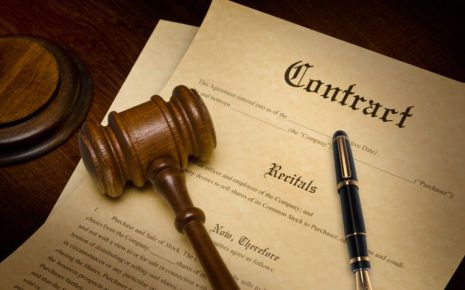Understanding the Importance of Leave and Licence Agreements
A Leave and Licence Agreement is a vital legal document that governs the
relationship between a licensor (property owner) and a licensee (tenant). It is
commonly used in the real estate sector to grant permission to a licensee to use
a property for a specific period while still retaining ownership rights. In this
article, we will delve into the key aspects of Leave and Licence Agreements,
their significance, and the rights and responsibilities of both parties
involved.
Definition and Purpose:
A Leave and Licence Agreement is a type of contractual arrangement that permits a licensee to occupy and utilize a property owned by the licensor temporarily. This agreement does not create a leasehold or a tenancy relationship, as the licensee does not obtain any right to possess or claim ownership of the property. Instead, it merely grants a revocable permission to use the property for a limited period.
Duration and Renewal:
Leave and Licence Agreements are typically used for shorter durations, often for a few months to a year. At the end of the agreed-upon period, the agreement can be renewed, renegotiated, or terminated, depending on the mutual consent of both parties. This flexibility makes it suitable for situations where the property owner may need to regain possession quickly or when the tenant requires temporary accommodation.
Rent and Security Deposit:
The agreement outlines the rent payable by the licensee for using the property. The rent can be fixed for the entire term or on a periodic basis (e.g., monthly). Unlike a lease, where a substantial security deposit is common, the security deposit in a Leave and Licence Agreement is generally lower, usually equating to two or three months' rent.
Purpose of Use:
The agreement specifies the purpose for which the licensee is permitted to use the property. It may restrict certain activities, such as commercial use or subletting. Any violation of these restrictions can lead to termination of the agreement.
Maintenance and Repairs:
The agreement usually outlines the responsibilities of both parties concerning property maintenance and repairs. In most cases, the licensor is responsible for structural repairs, while the licensee is responsible for day-to-day maintenance. However, this can vary based on mutual agreements.
Termination:
The agreement typically includes provisions for early termination by either party under specific conditions, such as breach of contract, non-payment of rent, or violation of the terms. Additionally, it may require the licensee to provide prior notice before vacating the property.
Stamp Duty and Registration:
In many jurisdictions, Leave and Licence Agreements are required to be stamped and registered. Stamp duty is a tax levied on the agreement based on the rent and the duration of the agreement. Registration provides legal sanctity to the agreement and makes it admissible as evidence in a court of law.
Legal Implications:
Although a Leave and Licence Agreement is not a tenancy agreement, it does not mean that the licensee has no legal protection. The agreement is legally binding and governs the rights and obligations of both parties. If either party violates the agreement's terms, they can be held legally accountable.
Conclusion:
Leave and Licence Agreements provide a legally sound framework for property owners and tenants to establish a temporary occupancy arrangement. By defining the rights and responsibilities of both parties, these agreements minimise conflicts and offer flexibility for short-term rentals.
Whether you are a property owner seeking a reliable tenant or a prospective tenant looking for temporary accommodation, a well-drafted Leave and Licence Agreement is an essential tool for safeguarding your interests. Consulting legal professionals is always advisable to ensure that the agreement complies with local laws and fulfils the specific needs of both parties.
Definition and Purpose:
A Leave and Licence Agreement is a type of contractual arrangement that permits a licensee to occupy and utilize a property owned by the licensor temporarily. This agreement does not create a leasehold or a tenancy relationship, as the licensee does not obtain any right to possess or claim ownership of the property. Instead, it merely grants a revocable permission to use the property for a limited period.
Key Components of a Leave and Licence Agreement:
- Parties Involved: The agreement identifies the licensor (property owner) and the licensee (tenant) with their full names, addresses, and contact details.
- Property Details: It includes a comprehensive description of the property being licensed, including its address, dimensions, and any amenities or facilities provided.
- Term and Termination: The agreement specifies the duration for which the licensee is granted permission to use the property. Additionally, it outlines the conditions under which either party can terminate the agreement prematurely.
- Rent and Deposit: The agreement outlines the rent payable by the licensee for using the property, along with any security deposit required and the conditions for its refund.
- Maintenance and Repairs: The responsibilities of both parties concerning property maintenance, repairs, and any associated costs are clearly defined.
- Restrictions and Permitted Uses: The agreement lists any restrictions on the use of the property, such as prohibiting subletting or commercial activities, and outlines the permitted uses.
- Insurance and Indemnity: It may require the licensee to obtain appropriate insurance coverage for personal belongings and liabilities, and may also include clauses related to indemnification in case of damages or legal issues.
Importance of Leave and Licence Agreements:
- Clarity and Legal Protection: A well-drafted Leave and Licence Agreement ensures that both parties understand their rights and obligations, reducing the likelihood of disputes and misunderstandings.
- Limited Tenure: Unlike a lease, the agreement offers flexibility as it allows the licensor to revoke permission after the agreed-upon term, making it ideal for short-term rentals.
- Property Owner's Control: The licensor retains complete ownership and control over the property, which means they can regain possession after the licensee's term ends or in case of any violation of the agreement's terms.
- Tenant Screening: The agreement allows the licensor to carefully select a licensee, protecting the property from potential misuse or damages.
Let's dive deeper into the key aspects of a Leave and Licence Agreement:
Distinction from Lease Agreement:A Leave and Licence Agreement is often confused with a Lease Agreement, but they have distinct differences. The primary difference lies in the nature of the right granted to the licensee. In a Lease Agreement, the tenant gets a possessory interest in the property for a specified period, giving them exclusive occupation and enjoyment rights. On the other hand, a Leave and Licence Agreement grants only a license to use the property, without creating any ownership or possessory rights. This means the licensee's stay is not protected under tenancy laws, and the licensor retains the right to revoke the permission at any time.Duration and Renewal:
Leave and Licence Agreements are typically used for shorter durations, often for a few months to a year. At the end of the agreed-upon period, the agreement can be renewed, renegotiated, or terminated, depending on the mutual consent of both parties. This flexibility makes it suitable for situations where the property owner may need to regain possession quickly or when the tenant requires temporary accommodation.
Rent and Security Deposit:
The agreement outlines the rent payable by the licensee for using the property. The rent can be fixed for the entire term or on a periodic basis (e.g., monthly). Unlike a lease, where a substantial security deposit is common, the security deposit in a Leave and Licence Agreement is generally lower, usually equating to two or three months' rent.
Purpose of Use:
The agreement specifies the purpose for which the licensee is permitted to use the property. It may restrict certain activities, such as commercial use or subletting. Any violation of these restrictions can lead to termination of the agreement.
Maintenance and Repairs:
The agreement usually outlines the responsibilities of both parties concerning property maintenance and repairs. In most cases, the licensor is responsible for structural repairs, while the licensee is responsible for day-to-day maintenance. However, this can vary based on mutual agreements.
Termination:
The agreement typically includes provisions for early termination by either party under specific conditions, such as breach of contract, non-payment of rent, or violation of the terms. Additionally, it may require the licensee to provide prior notice before vacating the property.
Stamp Duty and Registration:
In many jurisdictions, Leave and Licence Agreements are required to be stamped and registered. Stamp duty is a tax levied on the agreement based on the rent and the duration of the agreement. Registration provides legal sanctity to the agreement and makes it admissible as evidence in a court of law.
Legal Implications:
Although a Leave and Licence Agreement is not a tenancy agreement, it does not mean that the licensee has no legal protection. The agreement is legally binding and governs the rights and obligations of both parties. If either party violates the agreement's terms, they can be held legally accountable.
Conclusion:
Leave and Licence Agreements provide a legally sound framework for property owners and tenants to establish a temporary occupancy arrangement. By defining the rights and responsibilities of both parties, these agreements minimise conflicts and offer flexibility for short-term rentals.
Whether you are a property owner seeking a reliable tenant or a prospective tenant looking for temporary accommodation, a well-drafted Leave and Licence Agreement is an essential tool for safeguarding your interests. Consulting legal professionals is always advisable to ensure that the agreement complies with local laws and fulfils the specific needs of both parties.
Law Article in India
Legal Question & Answers
Lawyers in India - Search By City
LawArticles
How To File For Mutual Divorce In Delhi

How To File For Mutual Divorce In Delhi Mutual Consent Divorce is the Simplest Way to Obtain a D...
Increased Age For Girls Marriage

It is hoped that the Prohibition of Child Marriage (Amendment) Bill, 2021, which intends to inc...
Facade of Social Media

One may very easily get absorbed in the lives of others as one scrolls through a Facebook news ...
Section 482 CrPc - Quashing Of FIR: Guid...

The Inherent power under Section 482 in The Code Of Criminal Procedure, 1973 (37th Chapter of t...
The Uniform Civil Code (UCC) in India: A...

The Uniform Civil Code (UCC) is a concept that proposes the unification of personal laws across...
Role Of Artificial Intelligence In Legal...

Artificial intelligence (AI) is revolutionizing various sectors of the economy, and the legal i...








Please Drop Your Comments